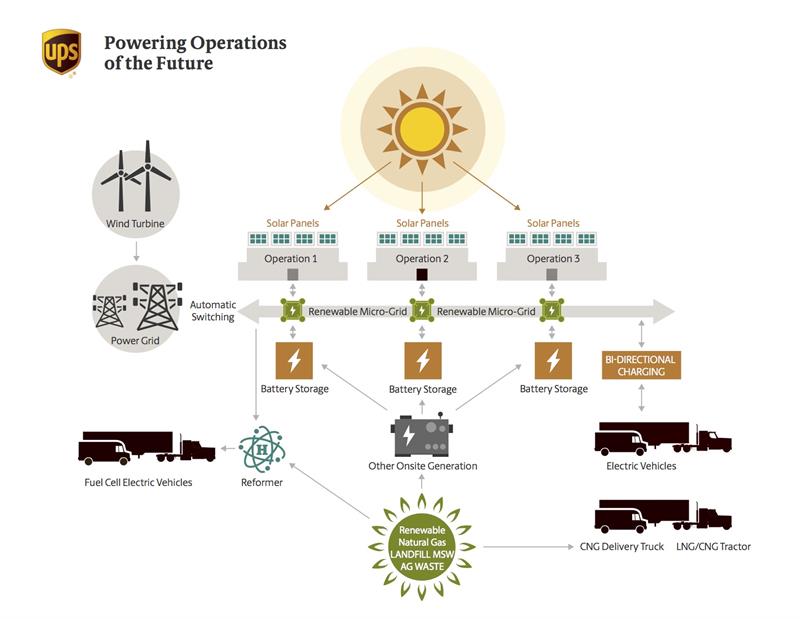The current maximum number of EVs operating from UPS’s London site is 65 and it believes this could be increased to 170, enabling the ‘beginning of the end’ of a reliance upon combustion engines.
The discovery is a result of the Smart Electric Urban Logistics (SEUL) project, and UPS believes that this is the first time these systems have been deployed at this scale anywhere in the world.
UPS believes that this solution will improve air quality for London and that soon, acquisition costs to put an electric vehicle on the road will be lower than the equivalent costs of its diesel counterpart.
A key part of this initiative is the use of onsite energy storage batteries. Although new batteries have been deployed at this stage, it is envisaged that in the future, these could be second-life batteries that have already been used in a UPS EV.

Together with the smart-grid, UPS hopes this will pave the way toward a EV infrastructure strategy that can dynamically make use of a conventional power upgrade, a smart grid, onsite storage, and local power generation including solar and other alternative sources.
“Our previous work on electric freight vehicles has shown that local grid infrastructure constraints are one of the main barriers to their large-scale uptake,” said Tanja Dalle-Muenchmeyer, programme manager electric freight at Cross River Partnership – a collaborator in the SEUL project. “We need to find smarter solutions to EV charging if we want to benefit from the significant air quality and environmental benefits these vehicles offer, and we believe this is such a solution.”













